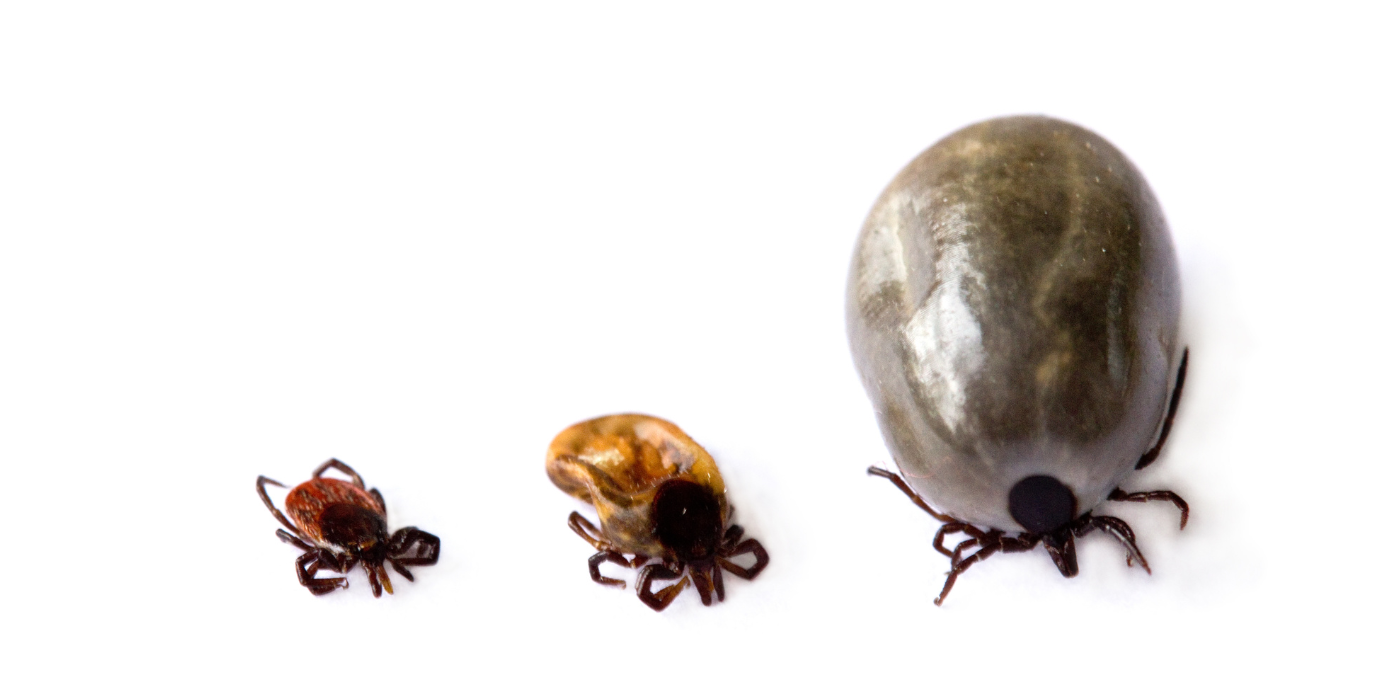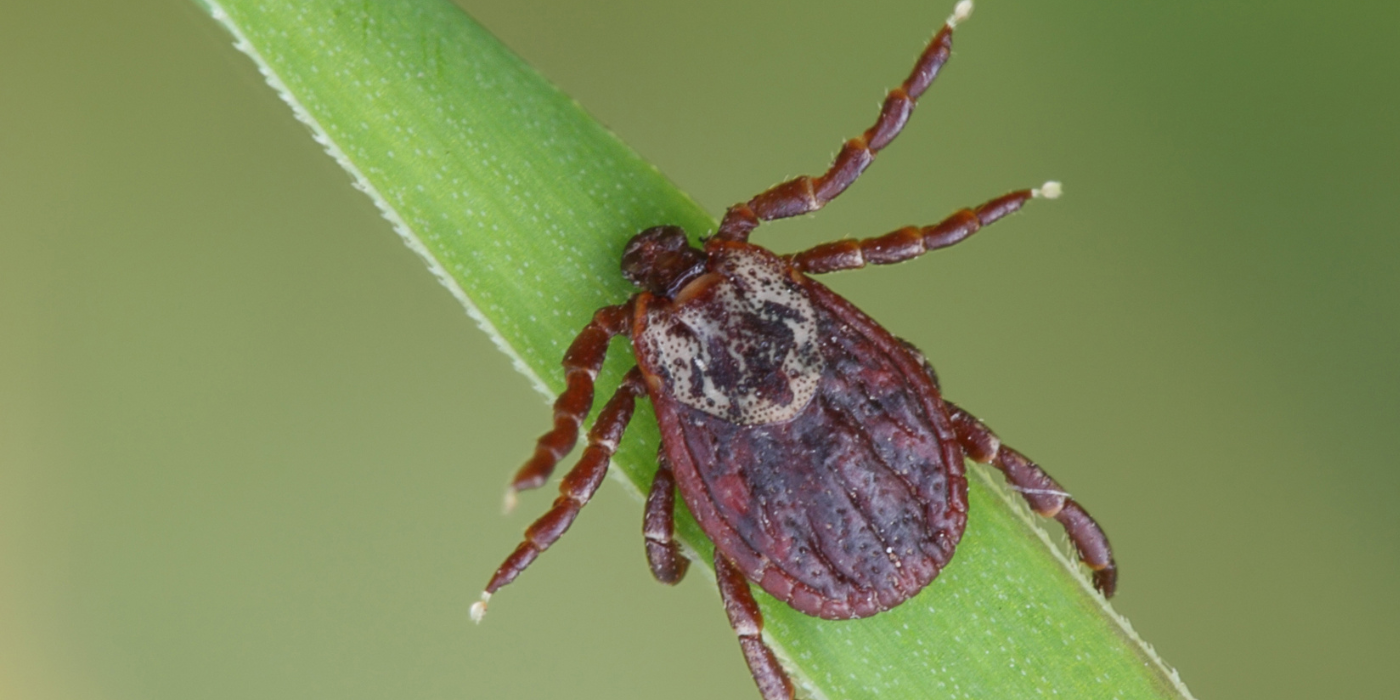Sorry about that! It looks like we’ve run out of stock for that product. Sign in below and we’ll send you an update when it’s back in stock.
20% DISCOUNT on your first order! Use the discount code "IMNEW20" at checkout!
Tick season is upon us, so in this short article we are taking a look at the specifics of what they are, what they do and how to treat them.
Ticks are a small parasite with jaws that they use to attached to our pets and on some occasions, even us. They can often be mistaken for a simple skin tag.
They wait on the tips of grass and various other plants, secured by their rear legs whilst outstretching their front legs waiting for a host to brush past them. This is when they take their opportunity to latch on. They then move slowly to an area of skin where they can get the best access to the host’s blood. They can take anywhere from 10 minutes to 2 hours before they find an appropriate spot.
When the tick has found an appropriate area of soft, thin, blood rich skin, such as the armpit or groin, the tick then grasps the skin and attaches itself to the host. It then starts feeding. The feeding tube the tick uses can, in some tick species, have barbs in order to keep it firmly anchored whilst feeding. Ticks also secrete small amounts of saliva which contains anaesthetic properties so the dog (or human) does not detect it.
Please Note – although ticks like the soft, thin skinned regions, they can ultimately attach themselves anywhere on the animal’s body so be sure to look everywhere when checking you or your pets.
The tick will then start to slowly feed on the blood of the animal. This can be for periods of several days until it is full. It will then release itself from the animal, dropping off to continue on to the next stage of its lifecycle.
During the feeding process if the animal the tick is feeding on has any blood borne infections the tick will ingest those pathogens. Then when the tick moves on to the next animal, it repeats the process. So, whilst the tick once more secretes the saliva to deliver the anaesthetic we discussed above, it can transmit the pathogen to the new host animal causing infections that can be serious, or even fatal if not treated quickly.
One of the more serious diseases tick can carry is Lyme disease. A circular or oval shape rash around a tick bite can be an early symptom of Lyme disease in some people.
The rash can appear up to 3 months after being bitten by an infected tick, but usually appears within 1 to 4 weeks and can last for several weeks.
The rash can have a darker or lighter area in the centre and might gradually spread. It's not usually hot or itchy.
The rash may be flat, or slightly raised, and look pink, red, or purple when it appears on white skin. It can be harder to see the rash on brown and black skin and it may look like a bruise.
Like all negative medical conditions, Lyme disease is easier to treat the earlier it is detected.
Ticks tend to live where the creatures they feed on live. So, you will more often find them in grassy or wooded areas however, you can also find them in urban and coastal regions.
The best way is to check your dog regularly, especially after walks in the countryside. They can be identified by finding a small lump sticking out of the skin. You may see a slight swelling around the lump but this isn’t in every case. When you look closer you should see the rear legs of the tick sticking out which will confirm it is a tick.
Firstly, do not be tempted to just pull it out. Ticks bury their head inside the host animal which, if removed incorrectly can be left behind inside the animal leading to infections. It is also important not to squeeze the body of the tick whilst it is attached as this can lead to the tick regurgitating its contents back in to the host animal, including any of those nasty pathogens we discussed earlier.
The best way to remove a tick from your dog is to use an inexpensive tool called a tick hook. These have a hook like scoop with a gap down the middle, much like the back end of claw hammer, only much smaller.
You slide the gap of the tick hook between the tick and the dog’s skin which will trap the tick’s mouthpiece. When you have gently slide the tick hook as far as you can, you gently rotate the tool until the tick comes loose. The tick should then be disposed of carefully and ideally with gloves on so any pathogens are not released onto your skin.

Tick prevention is usually by way of specialist collars, spot on treatments or tablets. As ticks are mostly a seasonal issue, the treatments can also be seasonal. This is something to discuss with your vet. It is also advisable that if you are going away with your pet, especially to rural areas that you have adequate tick protection before you go.
Remember, always check your dogs after going on walks anywhere in the countryside, especially in areas that may be home to wild animals such as deer, badgers, rabbits, cows, horses to name but a few.
We hope you enjoy lots of walks with your dogs during the warmer seasons and remember to give them a good check after every walk.
As with everything we cover here at Nurturing by Nature, if you have any questions then please do get in touch and we will do our very best to help you and your pet, whether it’s how to feed a raw dog food diet, natural dog treats or a health concern, we are here to help.
